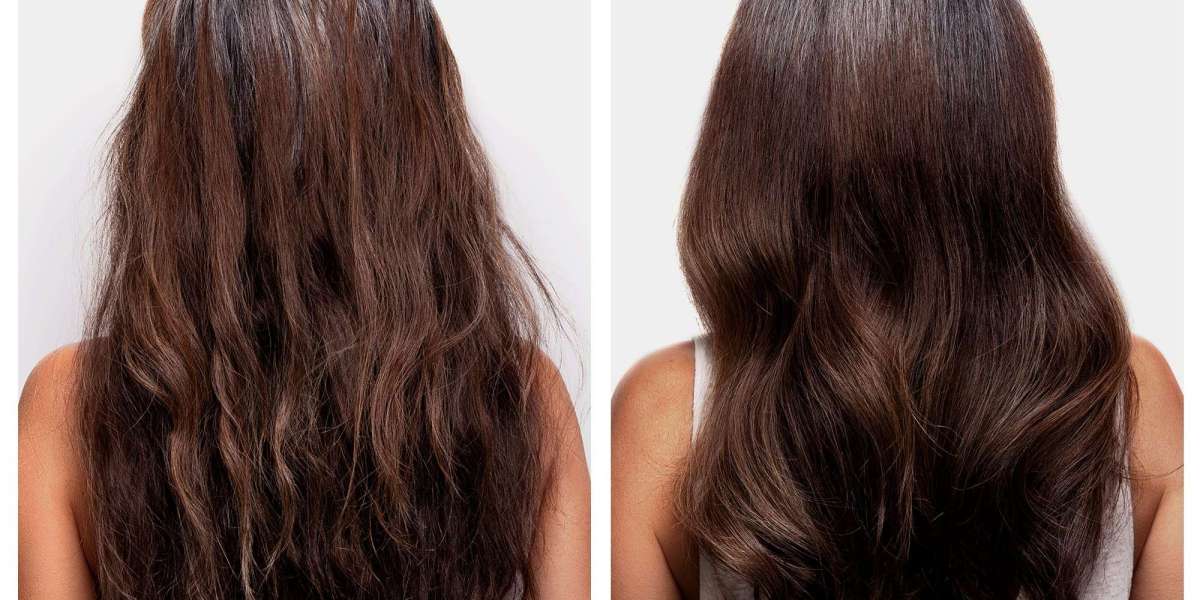What is a Hair Bonding Treatment?
Hair is made up of keratin, a protein containing various bonds that determine its strength, structure, and elasticity. These bonds can be broken down by chemical processes like coloring and bleaching, heat styling, and environmental factors like UV rays. This damage manifests as dryness, frizz, split ends, and breakage.
Exploring their benefits, different types, and aftercare tips.
A hair bonding treatment aims to repair this damage by reconnecting broken bonds within the hair shaft. These treatments typically utilize ingredients like:
- Proteins: Keratin, amino acids, and other proteins help fill in gaps and strengthen the hair structure.
- Bonding agents: These ingredients, like bisaminopropyl PG-Propyl Silanetriol, work to reconnect broken disulfide bonds within the hair.
- Emollients: These ingredients like fatty alcohols and silicones help smooth the hair cuticle and add shine.
Types of Hair Bonding Treatments
There are two main categories of hair bonding treatments:
Salon Treatments: These professional-grade treatments involve a multi-step process typically done at a salon. They often involve a series of products applied to the hair, followed by heat or light activation to further enhance the bonding process. Salon treatments tend to be more intensive and deliver longer-lasting results.
At-Home Treatments: These treatments are formulated for home use and are generally less intensive than salon treatments. They typically come in the form of shampoos, conditioners, masks, or leave-in products. While not as powerful as salon treatments, at-home options can still provide noticeable benefits and are a good option for maintaining hair health between salon visits.
Benefits of Hair Bonding Treatments
Hair bonding treatments offer a range of benefits for damaged hair, including:
- Reduced breakage: By reconnecting broken bonds, these treatments help strengthen the hair shaft, making it less prone to breakage.
- Improved elasticity: Healthy hair bonds allow for better stretch and bounce, making hair less likely to snap or become frizzy.
- Enhanced shine: Hair bonding treatments can help smooth the hair cuticle, resulting in increased shine and a healthier appearance.
- Color protection: By strengthening the hair structure, bonding treatments can help hair retain color for longer.
- Improved manageability: Stronger, smoother hair is easier to detangle, style, and manage.
Who Can Benefit from Hair Bonding Treatments?
Hair bonding treatments are a good option for anyone with damaged hair, especially those who experience:
- Dryness and brittleness
- Split ends
- Frizz
- Breakage
- Color fading
These treatments can also be beneficial for those who regularly use heat styling tools or chemical processes on their hair.
Considering a Hair Bonding Treatment?
Here are some things to keep in mind before getting a hair bonding treatment:
- Hair type: Consult a hairstylist to determine if a bonding treatment is suitable for your hair type and specific needs.
- Salon vs. at-home: Salon treatments offer more intensive results, while at-home options provide ongoing maintenance.
- Cost: Salon treatments can be expensive, while at-home options are generally more affordable.
- Aftercare: Following a proper hair care routine after a bonding treatment is crucial to maximize results and maintain healthy hair.
For more details visit our website: Beauty vital picks
Conclusion
Hair bonding treatments can be a powerful tool for repairing and strengthening damaged hair. By understanding the science behind these treatments and exploring the options available, you can make an informed decision about whether they are right for you. With proper care and consistent use, hair bonding treatments can help you achieve healthier, stronger, and more manageable hair.







